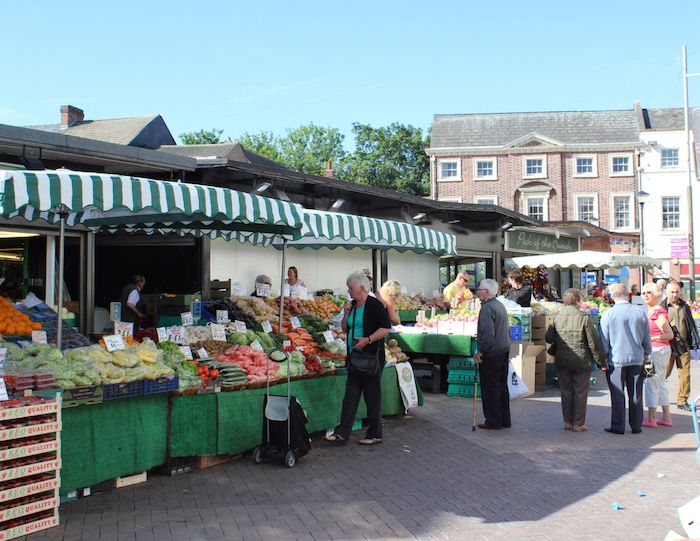Doncaster Roman Fort
The history of Doncaster started when the Romans constructed a fort in the area around 71 AD. The Romans named the fort ‘Danum’. However, in the 4th century the Roman population declined and the last Roman soldiers departed Britain in 407 AD.
The Romans left a village by the fort. They named it Don ceaster. Over time the name changed to Doncaster.
Doncaster throughout the Middle Ages
Doncaster grew into a busy town in the 12th century. In 1194 King Richard I gave Doncaster its charter. This was a document granting or confirming certain rights. In the Middle Ages, Doncaster was a bustling little market town, although it would seem relatively small to us today. In 1204 Doncaster suffered a terrible fire. In the Middle Ages, most buildings were built of wood, therefore fire was a regular ongoing hazard. However, this meant that if buildings did burn they could be easily rebuilt.
The street name gate is depicted from the old Danish word ‘gata’ which means ‘street’. In Medieval towns, all the craftsmen of a certain type tended to live in the same street. Baxter is an old word for baker so Baxtergate in Doncaster was the baker’s street, where all the bakers lived. It is thought that Frenchgate is named after the French-speaking Normans who settled there.
By the 14th century, friars took up residence in Doncaster. The friars were similar to monks but instead of withdrawing from the world, they regularly went out to preach. In 1307 the Franciscan friars arrived in Doncaster. They were named the ‘grey friars’ because of the colour of their clothing. White friars or ‘Carmelites’ arrived in the middle of the 14th century.
1500-1800
Throughout the 16th century and 17th centuries, the small market town of Doncaster grew ever further. This was in spite of plague outbreaks in 1562, 1582, 1583, 1604, and 1606. Every time the plague hit, it took a big part of the town’s population, but it managed to recover each time.
Doncaster opened a grammar school in 1575. However, followed by an outbreak of typhoid in 1700.
In the 18th century, Doncaster became a coaching town. Lots of stagecoaches passed through Doncaster, resulting in many inns.
The Mansion House in Doncaster was constructed between 1744-1750.
Doncaster’s first theatre opened in 1776 and in 1776, Doncaster’s famous St Ledger for horse racing.
In 1792 Doncaster opened a dispensary, where the poorest residents could obtain medicine for free.
19th century
By 1831, Doncaster’s population reached 10,000. By the standards of the time, it was considered quite large. However, like most towns in those days, it was unsanitary and dirty and many of the inhabitants lived in overcrowded and squalid conditions.
Things did improve in the late 19th century following the building of sewers in Doncaster and a piped water supply was established. The first infirmary opened in Doncaster in 1853. In 1869, the first free public library opened in Doncaster.
A new Guildhall was constructed in 1847 followed by a Corn Exchange in 1873, where grain was bought and sold was built. Meanwhile, railways started to run through Doncaster in 1849. Railways resulted in the end of the stagecoaches, but they delivered new prosperity to the town.
In 1827 the Corporation first lit the streets of Doncaster with gas. Doncaster would eventually gain electric lights in 1899.
In 1853 the Great Northern Railway relocated its engine building works to Doncaster from Boston. The engine works then became the main employer in the town. In the late 19th and 20th centuries, engineering dominated industry in Doncaster.
in 1858 St. Georges Church was rebuilt. It was designed by architect Sir George Gilbert Scott (1811-1878).
20th century
From 1902 electric trams ran through the streets of Doncaster. Trolleybuses later started to replace the trams in 1928. Trolleybuses were later phased out between the years 1961-1963.
Doncaster Museum and Art Gallery opened its doors in 1909. In 1964 a new purpose-built museum opened. In 1923 Elmfield Park opened.
By 1914, the Borough of Doncaster was widened further to include Balby, Wheatley, and Hexthorpe. Following rapid growth in Doncaster in the early 20th century, in 1951 Doncaster had a population of 83,000. In the 20th century, Doncaster became well known for its butterscotch.
In comparison to other areas, Doncaster got off relatively lightly during World War II, although notably there was a heavy attack in May 1941 where 2 parachute mines were dropped on the town.
The Frenchgate Centre, previously called the Arndale Centre, opened in 1968 followed by Waterfield Centre in 1969.
21st century
In 2005 Robin Hood Airport was opened near Doncaster. Danum Gallery, Library and Museum opened its doors 2021. This year, the population of Doncaster hit 158,000.





